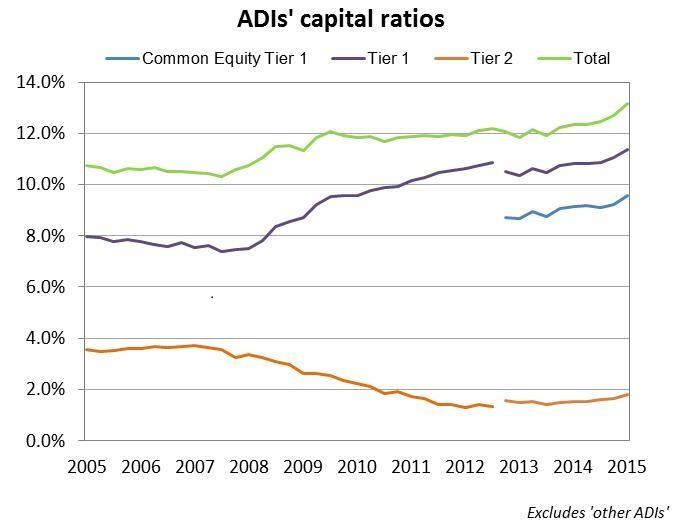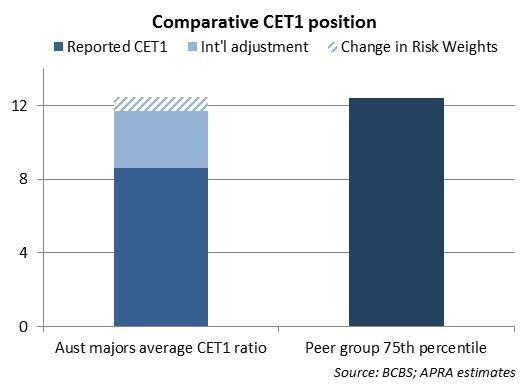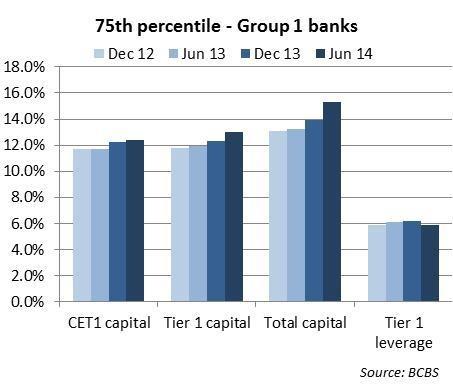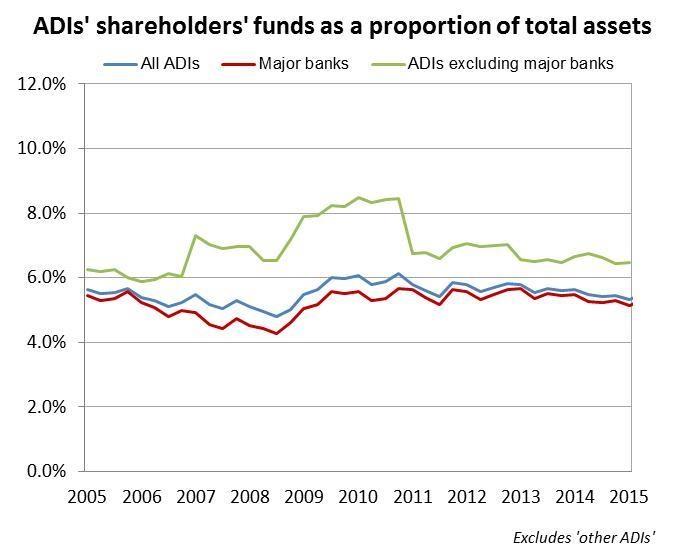In search of...Unquestionably strong
Wayne Byres, Chairman - RMA Chief Risk Officer Forum, Sydney
Thank you to the Risk Management Association for again inviting me to address the annual CRO Forum. These are important events, and APRA is certainly keen to continue to support them.
My remarks today have been titled ‘In Search Of …. Unquestionably Strong’. Some people in the room may recall a television series in the late 1970s and early 1980s called ‘In Search Of …’. The late Leonard Nimoy was the host, and each episode was some form of investigation or exploration of controversial and mysterious phenomena: 30 minutes each week devoted to topics such as Bigfoot, the Bermuda Triangle, and the possibility of visitors from elsewhere in the universe. This sort of thing fascinated me in my youth.
Alas, there is nothing quite as fascinating on the prudential regulator’s watch. But the Financial System Inquiry has sent us on a new search: to find a standard for ‘unquestionably strong’. As you know, the first recommendation of the FSI was that APRA should:
“set capital standards such that Australian authorised deposit-taking institution capital ratios are unquestionably strong.”1
But what ‘unquestionably strong’ meant precisely was largely left for APRA to determine.
We were given some guidance by the FSI, in the suggestion we aim for top quartile positioning against international peers – and as you know we recently published a study on how the major banks stack up against that benchmark. But we also made clear that we don’t think that international comparisons should be the ultimate benchmark against which ‘unquestionably strong’ is judged. It is undoubtedly a useful sense check, and one we will continue to make use of, but we are reluctant to tie ourselves mechanically to a moving target based on an international peer group ranking.
There are two basic reasons for that reluctance.
First and most importantly, because APRA should have the final say on the calibration of Australian capital standards, and not have it determined by changes in the ratios of foreign banks. And secondly, because precise comparisons are hard: there is no single, internationally-harmonised capital ratio that we can readily use to benchmark Australia against. The Basel framework is a set of minimum standards, and jurisdictions are free, as APRA has done, to strengthen them where needed for domestic purposes. But these domestic adjustments mean that, beyond a certain point, precise comparability is considerably diminished.
I’m going to spend my time today offering a few thoughts on the issue of top quartile positioning, in the context of the search for ‘unquestionably strong’. In doing so, I want to:
- reinforce the point that top quartile positioning is just one means of looking at the issue, and certainly not the only one we will use;
- highlight that there are many unknowns about the way capital adequacy will be measured in future, so what I have to say today is not the end of the story; and
- remind you that capital is just one measure of the strength of an ADI, and ideally we should think about ‘unquestionably strong’ with a broader perspective.
With those points in mind, I am going to preface my remarks with much the same disclaimer that was used by the ‘In Search Of …’ series:
“This [speech] presents information based in part on theory and conjecture. The [speaker's] purpose is to suggest some possible explanations, but not necessarily the only ones, to the mysteries we will examine."
The obvious starting point is: how do we see the capital position of the Australian banking system today?
APRA continues to be of the view that the Australian banking system is soundly capitalised. That starting assessment is importance because, as much as a relative comparison is important, absolute levels of capital matter too.
Viewed historically, the banking system’s risk-based capital ratios are as high as they have ever been. The system’s CET1 capital ratio was 9.6 per cent at end June 2015: more than twice minimum requirements, and appreciably above the top of the regulatory buffer requirements. And there have been additional capital raisings since that time which will in all likelihood further increase the system capital ratio when it is next reported at the end of September. That we have a soundly-capitalised banking system has been critical to the relatively smooth adjustment that has been made to the stronger requirements of Basel III (and for the largest banks, the D-SIB regime). Like many Asian jurisdictions with strong capital adequacy frameworks, the implementation of the post-crisis reforms – and the transition to a new world of permanently higher capital requirements – has been quite orderly.

But as the FSI noted, even if well-capitalised by domestic measures, Australia needs to be mindful of international comparisons (notwithstanding their shortcomings). We have a banking system with a material reliance on foreign funding, so ensuring foreign investors (both in debt and equity) have an understanding of that strength is important to the functioning of Australia’s financial system.
Our recent study that attempted to do an international capital comparison suggested the capital ratios of the major banks might, if measured on a basis more consistent with their peers, be on average around 300 basis points higher2. There are plenty of caveats to this3, but it provides a useful rule of thumb. At the time we did our study, the average reported CET1 ratio across the major banks was 8.6 per cent: we adjusted that up to 11.7 per cent for a more ‘apples for apples’ comparison. We took as our sample of peers the 100 or so so-called Group 1 banks in the Basel Committee’s Quantitative Impact Study (QIS): within this sample, the 75th percentile was 12.4 per cent. On that basis, we concluded that, in broad terms, positioning CET1 capital ratios at the bottom of the fourth quartile would require those ratios to be increased by around 70 basis points.
When we published the study, we were conscious that (amongst other things) the data we were using was already a year old – it was as at June 2014. Beyond the technical complexity in making these sorts of comparisons, that’s another reason why they are difficult: by the time you have the data to complete them, there is a risk that the conclusions are out-of-date. Nevertheless, as broad indicators of relative positioning, and given we don’t intend to tie ourselves to a precise percentile, we think they at least give us something reasonable to work with.
I don’t need to make this audience aware that we also recently announced a change to risk weights for the residential mortgage exposures of banks using the internal-ratings based (IRB) approach for capital adequacy. By adjusting a parameter within the IRB formula for mortgage exposures, the average risk weight on Australian residential mortgage exposures will increase from approximately 16 per cent to at least 25 per cent. Broadly speaking, this is the equivalent of increasing minimum capital requirements for the major banks by approximately 80 basis points. Obviously, the impact will vary somewhat from bank to bank, depending on the size and nature of their lending portfolio.
All other things being equal, this change will lower the banks’ reported capital ratios, but – because we’ll adjust for it when we next update our study – leave their relative position internationally unchanged. However, to the extent that the banks respond to the increased risk weights by increasing their actual capital levels by a corresponding amount – which is by and large what is occurring – their current reported capital ratios will be maintained when the higher risk weights come into effect, and their position relative to international peers will be improved.
It is coincidental that the 80 basis point increase in capital required to maintain capital ratios in response to the change in mortgage risk weights is just slightly more than the estimated 70 basis point gap to the 75th percentile that we found in the international capital comparison study. But it is also quite fortuitous. By moving quickly on this FSI recommendation, it means that, once the current round of capital raisings are completed, the CET1 gap that was identified in June 2014 is likely to have been substantially closed. That is important, because it provides APRA with more time to assess what further steps we might want to take, and when, to settle on a final standard for ‘unquestionably strong’. In particular, we have now created the capacity for APRA to observe and respond to international developments – of which I’ll speak more about shortly – over the next year or so without a pressing need to move sooner on domestic measures. And assuming, in the meantime, ADIs continue to take sensible opportunities to accumulate capital they should be well-placed to accommodate future events.

That doesn’t, however, mean we can sit back and relax, or regard the job as complete – far from it. Beyond the current (actually, 12 months old) gap of 70 basis points, our study endeavoured to judge where capital ratios might need to settle in the longer term if they were to be comfortably positioned in the top quartile. Our conclusion was that Australian major banks are likely to need to increase their capital ratios by at least 200 basis points, relative to their position in June 2014, over the medium- to long-term.
The first thing I’d like to stress is that figure is very much an estimate. Certainly, it is our best estimate, and designed to give a sense of our current understanding of what might be needed. We included the words ‘at least’ because there are reasons to think it might be more, rather than less. And we referred to ‘capital ratios’ to reflect this was not just a CET1 measure. But it’s difficult to be more precise based on the information we have today: there are still too many unknowns and moving parts. Let me quickly list a few.
- First, we know that banks around the world are continuing to build up capital. In each QIS published by the Basel Committee, the 75th percentile has increased – on average by about 20 basis points each six months. We expect that the next QIS study – which will be published in the next day or so – will see the top quartile capital ratios drift marginally higher again. At some point over the next couple of years this trend will likely cease as the global banking system completes its recapitalisation but for the time being there is good reason to think that there will be further increases in the capital ratios necessary to attain top quartile positioning.

- Second, the 70 basis points gap at June 2014 was an estimate of the minimum amount necessary to achieve 75th percentile positioning. In practice, being comfortably positioned in the top quartile would suggest targeting something more than the very bottom of the quartile, to give a margin of comfort that the positioning will be maintained over time.
- Third, we recognised that there were aspects of the comparison for which we could not make adjustments - areas where we know that other jurisdictions impose requirements, like APRA, that are in excess of the Basel minimums, but for which we had insufficient data to account for. We said in the study that there weren’t likely to be too many of these items, but they might mean we have slightly overstated the relative position of the Australian majors.
- Fourth, while CET1 ratios are obviously of prime importance, they are not the full story. We did our comparisons using four different capital measures, since all are relevant for considering financial strength. We found the Australian majors rank lower when, for example, total capital and leverage ratios are used in the comparison. While we might give primacy to the CET1 ratio, we shouldn’t fixate on it alone. We know that in the financial crisis, the leverage ratio – despite (or perhaps because of?) its simplicity – was something investors paid attention to. We need to be mindful that the strengthening of Australian risk-based capital ratios has not generated an equivalent strengthening of leverage ratios thus far.

- Finally, there are of course a range of initiatives coming down the pipeline from the Basel Committee that could materially change the capital framework. The entire framework of risk weights – standardised and model-based – is under review, as are the trading book and operational risk regimes. The Committee is also updating the operation of the so-called capital floor – something that APRA did away with some years ago on the basis that it was not binding. In a revised form, that may not be the case in future. Of course, these changes will affect all banks around the world in some way but, in the context of international relativities, some of the changes may well affect Australian ADIs to a proportionally greater extent than is the case in some other jurisdictions.
All of this means there are plenty of balls in the air at present and how they will land is not yet clear. The uncertainty that is created has been described as unhelpful: if it’s any consolation to you, I agree. Both regulators and banks would benefit from more certainty about the final shape of the regulatory framework. But while there is much that is uncertain, one thing that is clear is the direction the world is moving. That is towards higher capital ratios, reflecting a view that not enough has yet been done to deliver a resilient financial system taking into account the lessons of the financial crisis. So continuing to steadily accumulate capital looks to be a sensible strategy for a while yet.
Before I finish, I want to make two other important comments.
The first is that, while capital comparisons across jurisdictions are useful, there is a more fundamental capital comparison that no one can afford to lose sight of. That is the comparison of Australian capital ratios against Australian minimum requirements. For all the effort put in to providing comparable measures of capital, what ultimately counts – to investors as well as regulators – is how much capital a bank has over and above its regulatory minima. When I convert my height from inches to centimetres, I produce a bigger number but I don’t get taller. Similarly, converting an APRA-defined capital ratio into some other (higher) measure doesn’t make a bank sounder, or create any extra capital buffer. That’s another reason why we’re a little wary of giving too much prominence to international comparisons: if investors are interested, as they should be, in the likelihood that a regulator might intervene in the affairs of a bank, then the buffer between the locally-calculated ratio and the locally-calculated minimum is what counts.
And finally, I’ve spent a lot of time today talking about capital levels, but it’s important we don’t lose sight of the fact that an unquestionably strong bank requires more than just plenty of capital. In banking, asset quality, liquidity and funding, earnings and management quality are also highly relevant to financial strength. In fact, if a bank is weak in these areas, a strong capital position won’t last long. What is ‘unquestionably strong’ therefore needs to be viewed in the context of the other risks to which a bank is exposed, and the environment in which it operates.
I was careful in my opening remarks to stress that APRA was still thinking about how to define ‘unquestionably strong’ and the role of top quartile positioning. As of today, I think there are five key points to make:
- we have a soundly capitalised banking system overall in Australia;
- with the aid of recent capital raisings, the initial 70 basis point CET1 gap to the top quartile that we identified is likely to have been substantially closed;
- higher capital ratios are likely to be needed if current relative positioning is to be retained and enhanced, particularly if measures beyond CET1 are examined;
- by quickly moving on the FSI recommendation regarding mortgage risk weights, APRA has created time to consider international developments emerging over the next year or so; and
- given where we are today, APRA and the banking industry have time to manage any transition to higher capital requirements in an orderly fashion.
The need to accommodate international developments means that there is good reason not to rush to set a standard for ‘unquestionably strong’. It is also important that, when we settle on an ‘unquestionably strong’ standard, we capture wider perspectives of a bank’s strength than just capital.
Unfortunately, talking about that wider perspective would require a second episode of ‘In Search Of ….’ to cover. However, for those of you who are interested in it, I’ll be giving another speech on that issue very soon. So stay tuned!
Footnotes:
1 Financial System Inquiry (November 2014), Final Report, p41.
2 See APRA (July 2015), ‘Information Paper: International Capital Comparison Study’.
3 As the study noted, APRA did not have access to the data for individual banks in the peer group. As a result, it was not possible to adjust for some country-specific differences in the application of the Basel framework. APRA was also unable, due to insufficient data, to adjust reported ratios for the impact of the capital floor (ie the floor that limits the extent of capital benefit that banks can receive from moving from standardised risk weights to risk weights derived from internal models). This floor is applied in almost all jurisdictions other than Australia, although not always in a consistent manner. It is possible that the floor could have a material impact on the relative positioning of Australian banks vis-à-vis their international peers.
The Australian Prudential Regulation Authority (APRA) is the prudential regulator of the financial services industry. It oversees banks, mutuals, general insurance and reinsurance companies, life insurance, private health insurers, friendly societies, and most members of the superannuation industry. APRA currently supervises institutions holding around $9.8 trillion in assets for Australian depositors, policyholders and superannuation fund members.